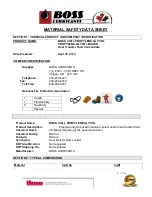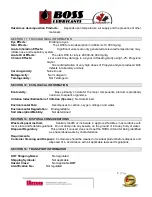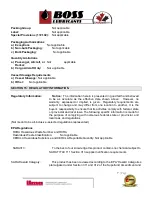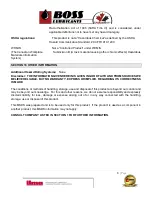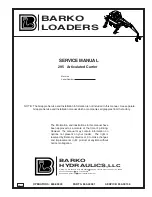
Introduction & Installation
3-1
3. Introduction & Installation
The Easy Service 200 (ES200) portable heat exchanger is a compact, mobile unit, ideal for
heating, drying and climate control applications. Hot fluid flows through the heat transfer coil,
where heat is transferred to the air drawn through the coil by the unit fan. The coil is specially
designed for optimum heat transfer without adding any moisture or fuel combustion by-products
to the air.
Note: These units are designed to connect to DRYAIR water heaters. Specifications,
including BTU output, cannot be guaranteed using other water heaters.
There are only electrical power and HTF connections to make to an ES200 unit. Each unit can be
put into position by a single person and the connections made in only a few minutes. One
advantage to the ES200 is the stainless-steel enclosure, making the unit corrosion resistant.
Another advantage is that the entire fan motor assembly can be easily removed with the use of
quick-release pins for service and maintenance of the unit (see section 6.2 for further details).
Each ES200 is shipped complete with fluid, making the unit ready to install upon arrival. The
unit is thermostatically controlled, allowing a steady temperature to be maintained as the fan cuts
in and out while the unit runs. The fan is also equipped with a variable speed controller to allow
the user to adjust the fan speed during operation (see Figure 4.1).
Positioning
•
Portable heat exchangers must have a minimum clearance of 1½ feet on the air intake side of
the unit.
•
Full product dimensions can be found in Appendix – Product Dimensions.
Electrical Connections
•
The ES200 unit requires a 110 Volt, 15 Amp power supply.
•
Each unit is factory equipped with a short, 110 Volt appliance cord and plug.
•
A maximum of 100 ft of 14 AWG (or equivalent) extension cord can be run to each unit.
•
The extension cord connection can be locked into the control box for security purposes.
•
The electrical schematic for this unit can be found in Appendix – Electrical Schematic.
Fluid Connections
•
Connect the unit to 1inch circulation lines and then to a circulation manifold using quick
couplers. Circulation lines of different sizes can be purchased to allow connections to other
DRYAIR units.


















